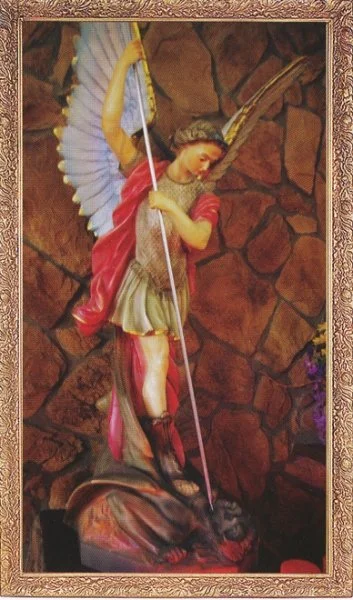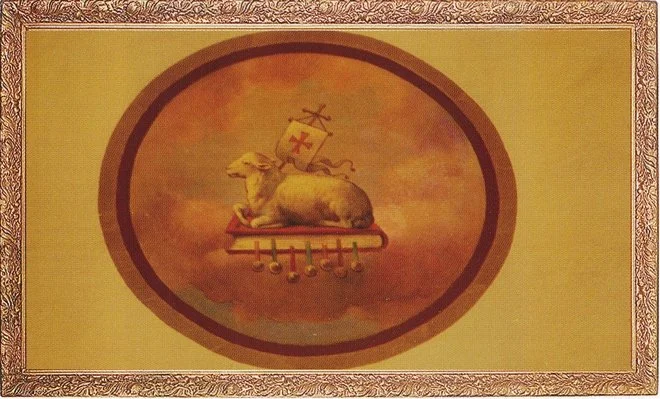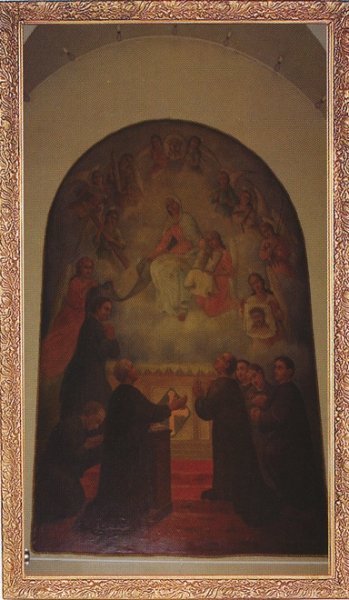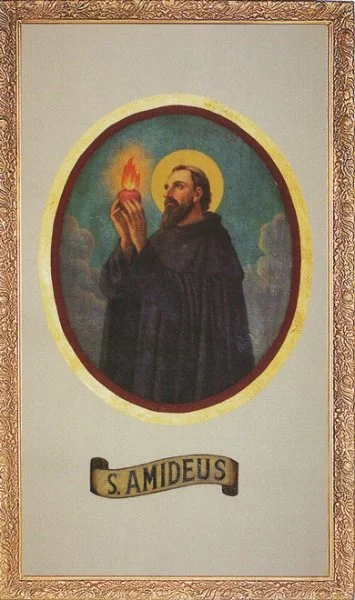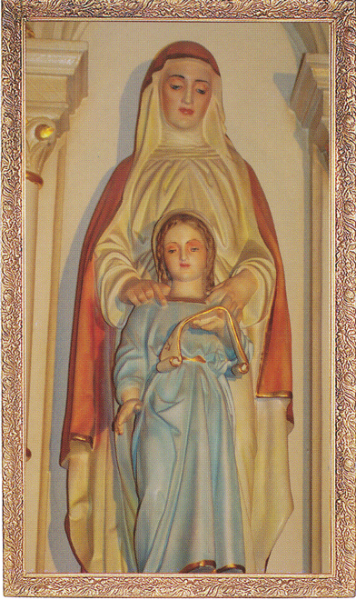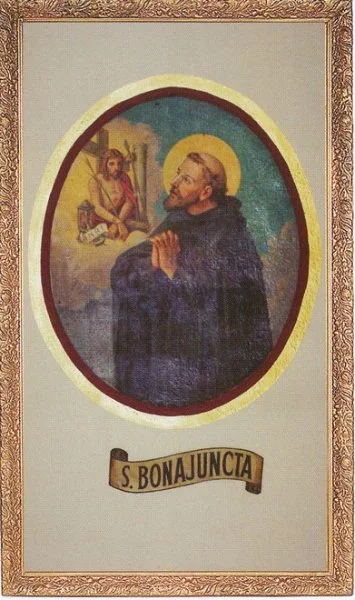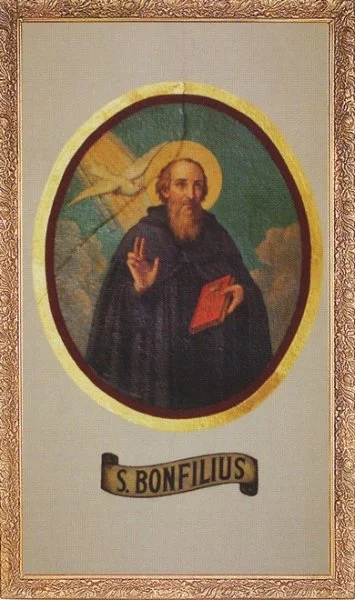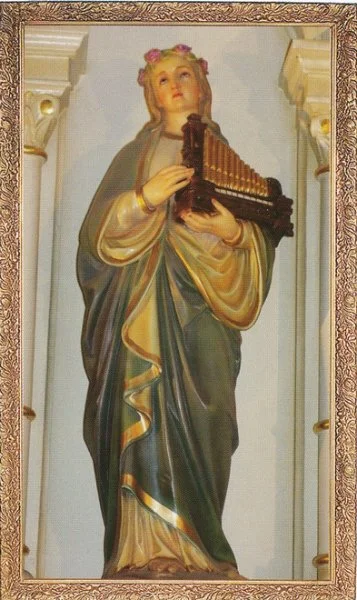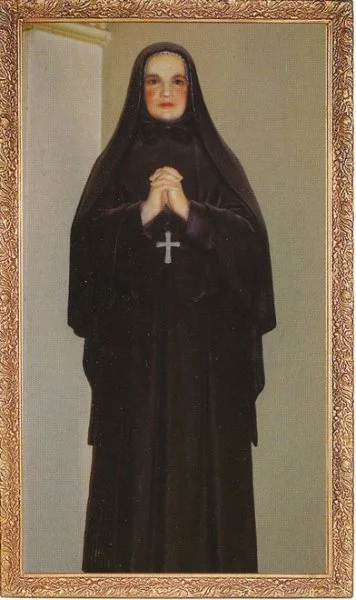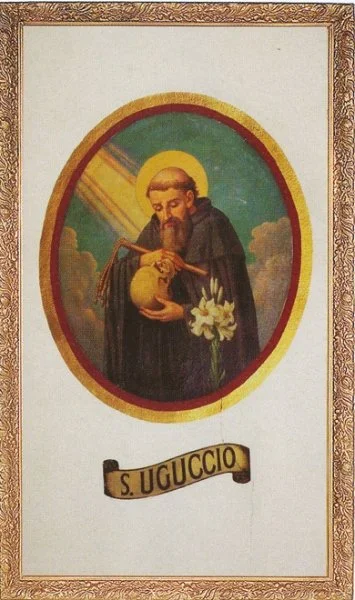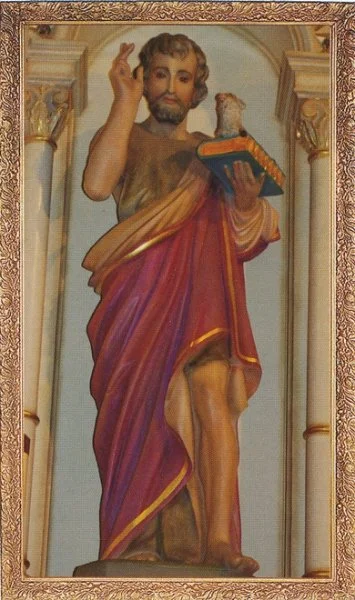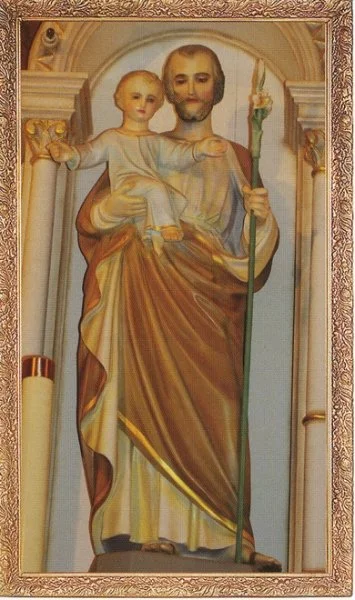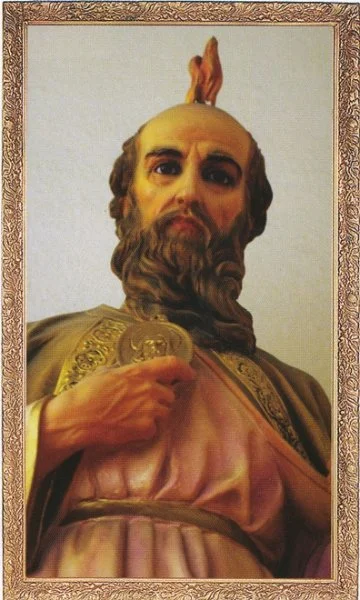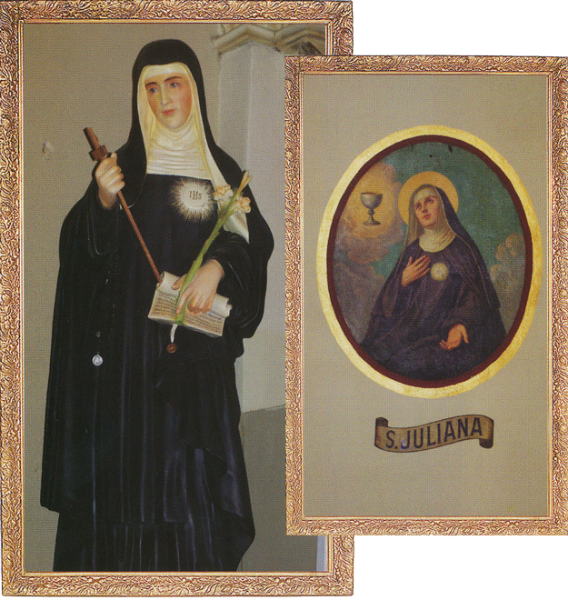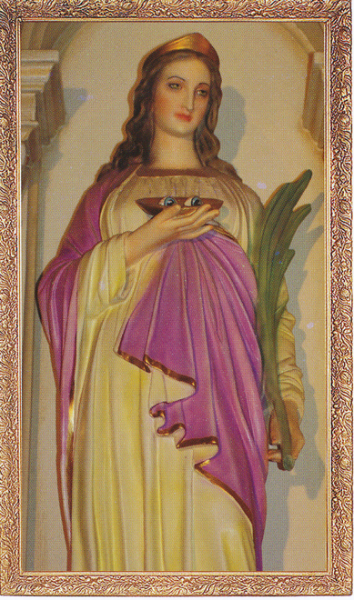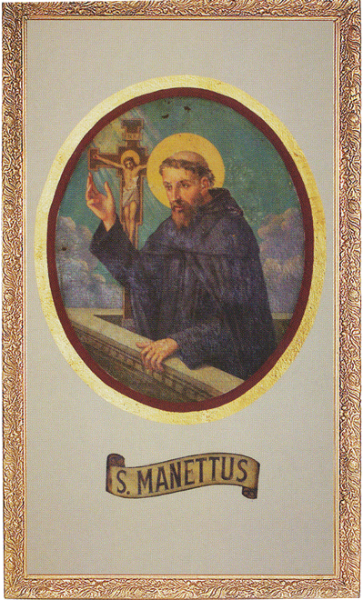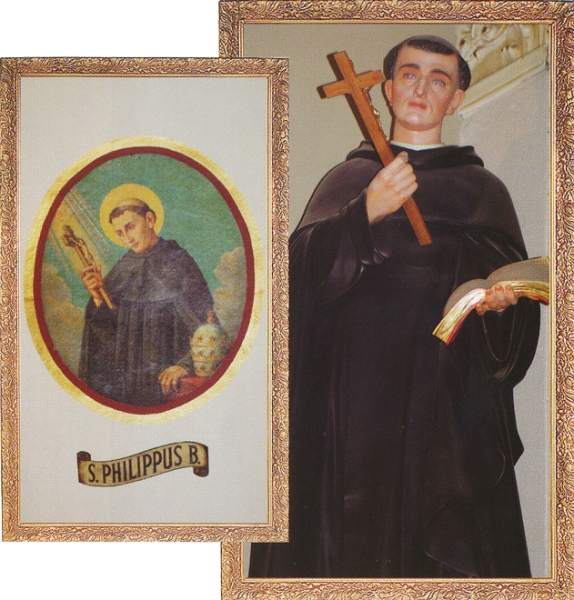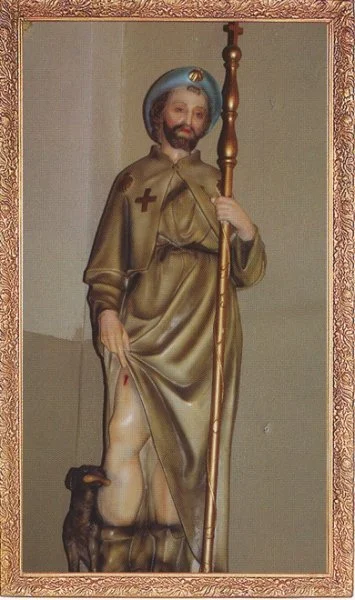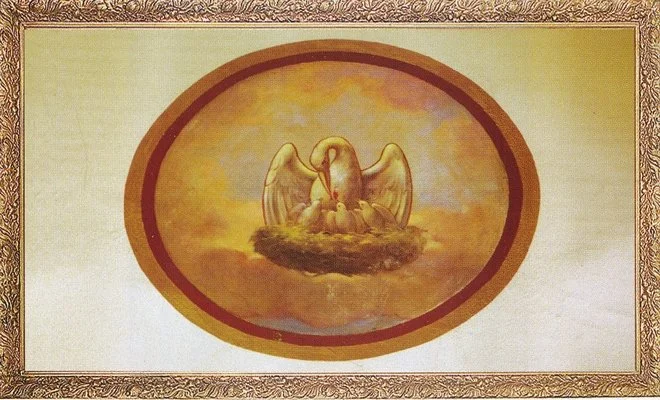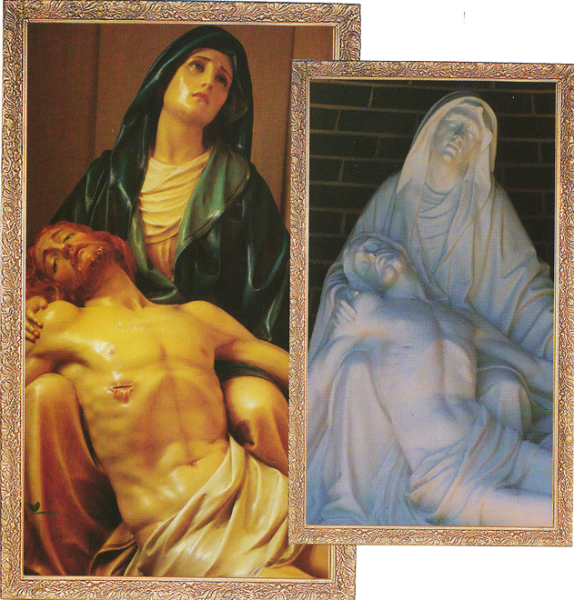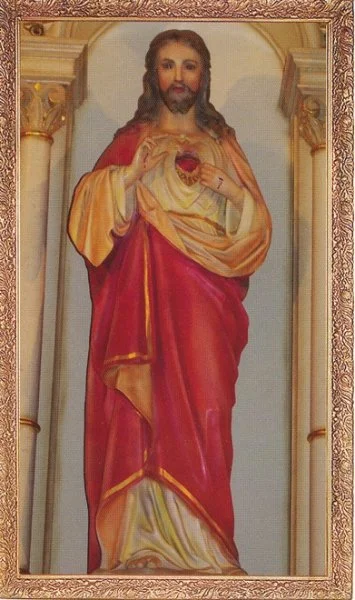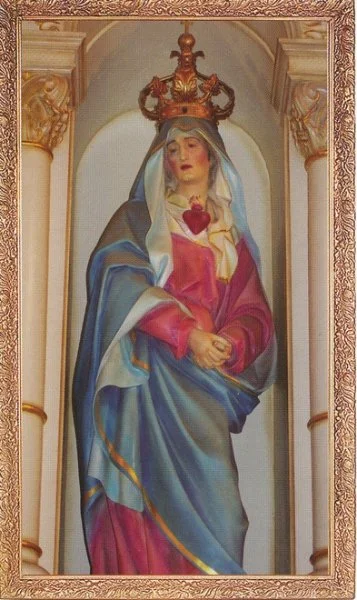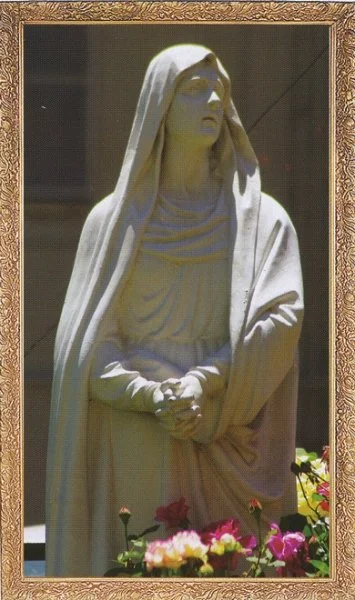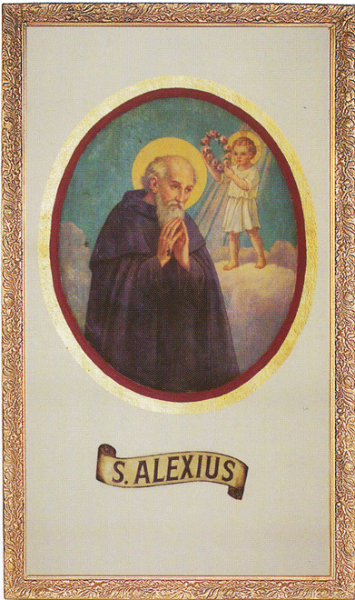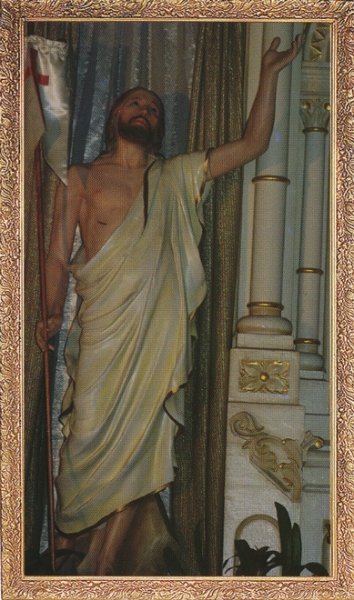Sacred Treasures
The Order of Servites is the fifth mendicant (friar) order, the objects of which are the sanctification of its members, preaching the Gospel, and the propagation of devotion to the Mother of God, with special reference to her sorrows and her desolation during the Passion of Jesus.
Here are the Sacred Treasures of The Servants of Mary at Our Lady of Mount Carmel:
Our Lady of Mount Carmel
The relationship between Our Lady and Mount Carmel is geographical and biblical. Mount Carmel is about 20 miles from Nazareth and overlooks the Mediterranean Sea. The Mount is considered a symbol of blessing and beauty for its rich vegetation. Scripture tells that Elijah, the prophet, prayed to God on this Mount for rain during a drought and God answered his prayer with abundant rain and new life. The clouds that rose from the sea that brought the rain subsequently became a symbol for Mary and eventually developed into the title "Star of the Sea." Mount Carmel eventually attracted an order of hermits and, from the 12th century on, it served as a residence to a Latin community of hermits called the Brothers of the Blessed Virgin Mary of Mount Carmel. A religious order that followed in the footsteps of Mary, the Order of Carmel considers itself totally Marian, a privilege that it claims to have received from the Blessed Virgin Mary herself and which is made visible through the brown scapular. The Mount Carmel brown scapular is the oldest among eight scapulars to be approved by the Church that have a Marian character. The brown scapular owes its origin and existence to Saint Simon Stock who received a large brown scapular from Our Lady in a vision on July 16, 1251. A scapular is the sleeveless outer garment of a monk's habit that falls from the shoulders. Its significance implies that one is clothed with Mary's attitudes and devotion to Christ.
St. Michael
St. Michael is one of the principal angels and his feast day is September 29. He is the patron saint of mariners. He fought in heaven against Lucifer and his followers.
Infant of Prague
People come to Prague to the Infant Jesus of Prague to ask for healing, peace, or for assistance in conceiving children. One legend says the Infant Jesus originally came from Spain. The Infant Jesus miraculously appeared to a certain monk, who modeled the statue based upon his apparition. Another legend says the statue belonged to St. Teresa of Avila, the founder of Discalced Carmelites, who gave the statue to a friend's daughter who was traveling to Prague.
Jesus Taken from the Cross
This statue portrays Jesus after he is removed from the cross. His blood is pouring from his forehead where the crown of thorns was placed on his head, and from where his side was pierced. His body is ready for burial, so he can then resurrect from the dead.
Lamb of God
The Paschal Lamb, or Lamb of God, symbolically prefigures Christ in the Old Testament, who redeemed the world by the shedding of His blood, and particularly the Eucharistic banquet, or new Passover, has always remained the constant belief of Christian tradition.
Our Lady of Guadalupe
Her feast day is December 12 and she is the patron saint of unborn children. The Blessed Virgin Mary appeared to Juan Diego on December 9, 1531, while he was rushing down Tepeyac Hill to hear Mass in Mexico City, and she told Juan Diego to build a temple where she stood. When the bishop did not believe Juan Diego, the Blessed Mother left roses at the place where the temple was to be built. Juan Diego gathered the roses in his tilma (a long cloak made from cactus), and when he reached the bishop and unfold his cloak to let the roses fall out, a life size figure of the Virgin Mother was glowing on the cloak. The poor quality of the cloak shows no signs of deterioration nearly 500 years later.
Seven Holy Founders
Their feast day is February 17 and they formed a confraternity of laymen, belonging to the Major Society of Mary. While together on the feast of the Assumption in 1233, the Blessed Virgin Mary appeared to them. She advised them to withdraw from the work and devote themselves entirely to eternal things. The seven Florentine men gave all they had to the poor and withdrew to a life of solitude, poverty, and prayer. The Seven Holy Founders are also portrayed in the medallions on the ceiling.
St. Amadeus
A Holy Founder of the Servants of Mary. To the practice of all virtues, especially charity, he gave himself entirely to God and man. He often said, “You have been gathered together in unity, in one spirit in the one house to be one heart and one life in God.”
St. Anne
She is the patroness of women in labor, mothers, and miners. She is the mother of the Blessed Virgin Mary, who is depicted with her, and St. Anne's feast day is July 26.
St. Anthony
He was born in Lisbon, Portugal, in 1195 and died at Vercelli, Italy, on June 13, 1231. He is patron saint of lost articles and his feast day is June 13. During the years that his sacred body lay in repose in an open casket, St. Anthony's body was reduced to dust, but his tongue remained uninjured with a lively, fresh red color. This signified his fervency in preaching the Gospel and the numerous miracles attributed to praying to him.
St. Bonajuncta
A Holy Founder of the Servants of Mary. The second Superior of the Servites and the youngest, he said, "Mindful that he who commands is exposed to greater dangers than are those who serve." He implored unceasingly for the strength and light to lead.
St. Bonfilius
A Holy Founder of the Servants of Mary. Known as a wise and prudent man, he said, "Above all, dear brothers, love God, then your neighbor; this is the command given to us." He was the first Superior of the Servites and eldest of the Seven Holy Founders.
St. Cecilia
She was a virgin martyr, who died in Rome (161-192 AD). St. Cecilia is the patroness of music. Her feast day is November 22, and she is praised as a perfect model of Christian women because of her virginity and her martyrdom suffered due to her love of Christ.
St. Frances Xavier Cabrini
She founded the Missionary Sisters of the Sacred Heart of Jesus in Rome in 1880. At the suggestion of Pope Leo XIII, she and her sisters came to Denver and other cities in the United States to spread their ministries in caring for the sick and elderly, establishing orphanages and industrial schools, and giving religious instructions to those in prisons and those wanting retreats. Her feast day is November 13 and she is the patron saint of immigrants. Mother Cabrini founded a Motherhouse for her Missionary Sisters in Mt. Carmel parish and assumed direction of Mount Carmel's elementary school.
St. Hugh
A Holy Founder of the Servants of Mary. Bound in a strong friendship with fellow Servite, St. Sostene, he was known to say, "God is better loved with a friend."
St. John the Baptist
He was the son of Zachary and Elizabeth and his feast day is June 24. He is also a cousin of the Blessed Virgin Mary. His work prepared the way of the Lord and he announced the coming of the Messiah. The commemoration of his birth is one of the oldest feasts introduced into the Church.
St. Joseph
From most accounts, he was born in Bethlehem and settled in Nazareth. St. Joseph was a carpenter, and his feast day is March 19. He is the patron saint of the universal Church.
St. Jude
His feast day is October 28 and he is the patron saint of lost causes. St. Jude was a nephew of Mary and Joseph, one of the apostles, a missionary, and a martyr in Persia.
St. Juliana
She was born in 1270 and died on June 12, 1341. Her uncle, St. Alexis Falconieri, was one of the Servite Order. After her father's death, she received from St. Philip Benitius, then General of the Servites, the habit of the Third Order, of which she became the foundress. They devoted themselves especially to the care of the sick and other works of mercy. St. Juliana Falconieri was honored as a saint immediately after her death and canonized in 1737. Her feast day is June 19 and she is patron saint of the sick. St. Juliana Falconieri is depicted on the ceiling in on of the painted medallions and in a statue.
St. Lucy
She was born around the year 283 in Syracuse, Sicily. She consecrated her virginity to God, and she hoped to devote all her worldly goods to the service of the poor. Her feast day is December 13. She is the patron saint of those afflicted with blindness.
St. Manettus
A Holy Founder of the Servants of Mary. The fourth Superior of the Servites was humble, pious, and the theologian of the Seven Holy Founders. He wanted to "test all, experience everything, so to keep only the good."
St. Peregrine
His feast day is May 4 and he is the patron saint of cancer patients. In his youth, St. Peregrine bitterly despised the church; but after an encounter with St. Philip Benizi, St. Peregrine was received into the Servite Order in 1283. After becoming a Servite friar, he began a life-long journey of service and prayer. He then suffered a confer-like growth on his leg and the night before it was to be amputated, he dreamt that the Lord reached down from the cross and touched the wound. The next mourning, he awoke cured. He died in 1345 and his body remains uncorrupted to this day. He is also portrayed in one of the medallions on the ceiling.
St. Philip Benizi
He was born on the day the Blessed Virgin first appeared to the Seven Founders of the Servite Order, August 15, and afterwards became the great propagator of the order. He was a humble person, who became a Servite lay brother and reluctantly, later a priest. He became the General of the Order and escaped election to Pope by retiring to a grotto in the mountains until the conclave ended. Philip lived in extreme penitence. He is depicted on the ceiling on the painted medallions and in a statue.
St. Rocco
He is a patron saint of bachelors and his feast day is August 16. St. Rocco, a Frenchman, came to Rome as a pilgrim, where he became known for his love of charity towards the sick and his adherence to living an impoverished life. He is famous for his gift of healing because his veneration in Italy is associated with the arrest of plague in Ferrara during 1429 due to his intercession.
St. Sostene
A Holy Founder of the Servants of Mary. Sostene and Hugh fashioned a coat-of-arms for the Servite Order, which was a lily with an "S" woven around the stem. Above the lily, in the shape of a crown, was the saying "To serve Mary is to reign."
St. Thérèse of Lisieux
She was born on January 2, 1873 in Alençon, France. She died in Lisieux, France on September 30, 1897. She is also known as the Little Flower of Jesus. She became a Carmelite nun at the unusual age of 15 because of her eagerness to give her life to God. The fame of her sanctity and the many miracles performed through her intercession caused the canonization on June 10,1914, only seventeen years after her death. St Thérèse's feast day is October 1 and she is the patron saint of missionaries.
The Pelican
The pelican, represented here as a bird feeding its own children with its own blood, corresponds to the Eucharist as Christ feeds us with His body and blood.
La Pietà
The Pietà depicts the Virgin Mary holding the body of her son Jesus Christ after his death.
Sacred Heart of Jesus
Devotion to the Sacred Heart is a special form of devotion to Jesus. The Heart of Jesus, like all that belongs to Him is worthy of adoration, and His Heart is symbolic of Jesus' paternal love and the goodness of God.
Our Lady of Sorrows
Her feast day is September 15. The Seven Sorrows of the Blessed Virgin Mother are depicted on plaques below the Stations of the Cross on the walls of the church. The Seven Sorrows are: - The Prophecy of Simeon; - The Flight into Egypt; - Having lost the Holy Child at Jerusalem; - Meeting Jesus on his way to the Calvary; - Standing at the foot of the Cross; - Jesus being taken from the Cross; - The Burial of Christ.
Mary at the Foot of the Cross
The statue of the Sorrowful Mother depicts the spiritual martyrdom of the Mother of God and her compassion with the sufferings of Jesus Christ. The Seven Holy Founders of the Servite Order took up the sorrow of Mary standing under the Cross, as the principal devotion of their order in 1239.
St. Alexis
A Holy Founder of the Servants of Mary. Born in Florence in 1200 and died on February 17, 1310, St. Alexis was the only laymen of the Seven Holy Founders is the patron saint of Servite students, and as the last of the Seven Holy Founders to die. He only wanted to serve, taking on the lowliest of tasks with cheerfulness. On his front door, he wrote these words, "Announce and let it be heard the voice of joy; problem it to the far ends of the earth. The Lord has set his people free. "
Risen Christ
The statue of the Resurrected Jesus depicts Jesus looking at the heavens. This statue is usually covered during Holy Week to symbolically show that Jesus is suffering, but will eventually resurrect from the dead.



